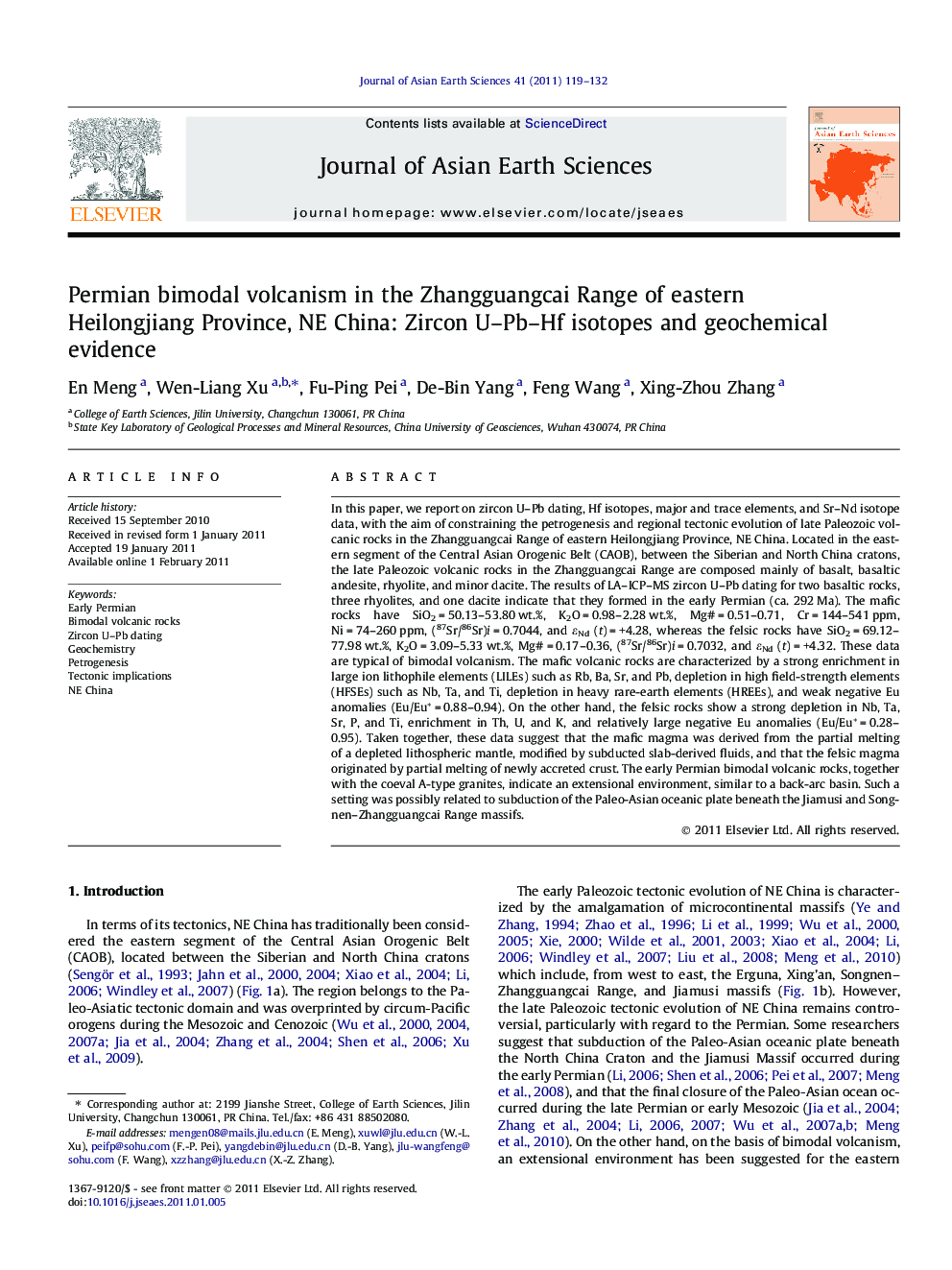| Article ID | Journal | Published Year | Pages | File Type |
|---|---|---|---|---|
| 4731938 | Journal of Asian Earth Sciences | 2011 | 14 Pages |
In this paper, we report on zircon U–Pb dating, Hf isotopes, major and trace elements, and Sr–Nd isotope data, with the aim of constraining the petrogenesis and regional tectonic evolution of late Paleozoic volcanic rocks in the Zhangguangcai Range of eastern Heilongjiang Province, NE China. Located in the eastern segment of the Central Asian Orogenic Belt (CAOB), between the Siberian and North China cratons, the late Paleozoic volcanic rocks in the Zhangguangcai Range are composed mainly of basalt, basaltic andesite, rhyolite, and minor dacite. The results of LA–ICP–MS zircon U–Pb dating for two basaltic rocks, three rhyolites, and one dacite indicate that they formed in the early Permian (ca. 292 Ma). The mafic rocks have SiO2 = 50.13–53.80 wt.%, K2O = 0.98–2.28 wt.%, Mg# = 0.51–0.71, Cr = 144–541 ppm, Ni = 74–260 ppm, (87Sr/86Sr)i = 0.7044, and εNd (t) = +4.28, whereas the felsic rocks have SiO2 = 69.12–77.98 wt.%, K2O = 3.09–5.33 wt.%, Mg# = 0.17–0.36, (87Sr/86Sr)i = 0.7032, and εNd (t) = +4.32. These data are typical of bimodal volcanism. The mafic volcanic rocks are characterized by a strong enrichment in large ion lithophile elements (LILEs) such as Rb, Ba, Sr, and Pb, depletion in high field-strength elements (HFSEs) such as Nb, Ta, and Ti, depletion in heavy rare-earth elements (HREEs), and weak negative Eu anomalies (Eu/Eu* = 0.88–0.94). On the other hand, the felsic rocks show a strong depletion in Nb, Ta, Sr, P, and Ti, enrichment in Th, U, and K, and relatively large negative Eu anomalies (Eu/Eu* = 0.28–0.95). Taken together, these data suggest that the mafic magma was derived from the partial melting of a depleted lithospheric mantle, modified by subducted slab-derived fluids, and that the felsic magma originated by partial melting of newly accreted crust. The early Permian bimodal volcanic rocks, together with the coeval A-type granites, indicate an extensional environment, similar to a back-arc basin. Such a setting was possibly related to subduction of the Paleo-Asian oceanic plate beneath the Jiamusi and Songnen–Zhangguangcai Range massifs.
Research highlights► A suite of Early Permian volanic rocks were recognized in the eastern CAOB. ► Early Permian volanic rocks consist mainly of bimodal basalts and rhyolites. ► Early Permian bimodal volanic rocks formed under an extensional environment. ► Early Permian volcanism was related to subduction of the Paleo-Asian oceanic plate.
